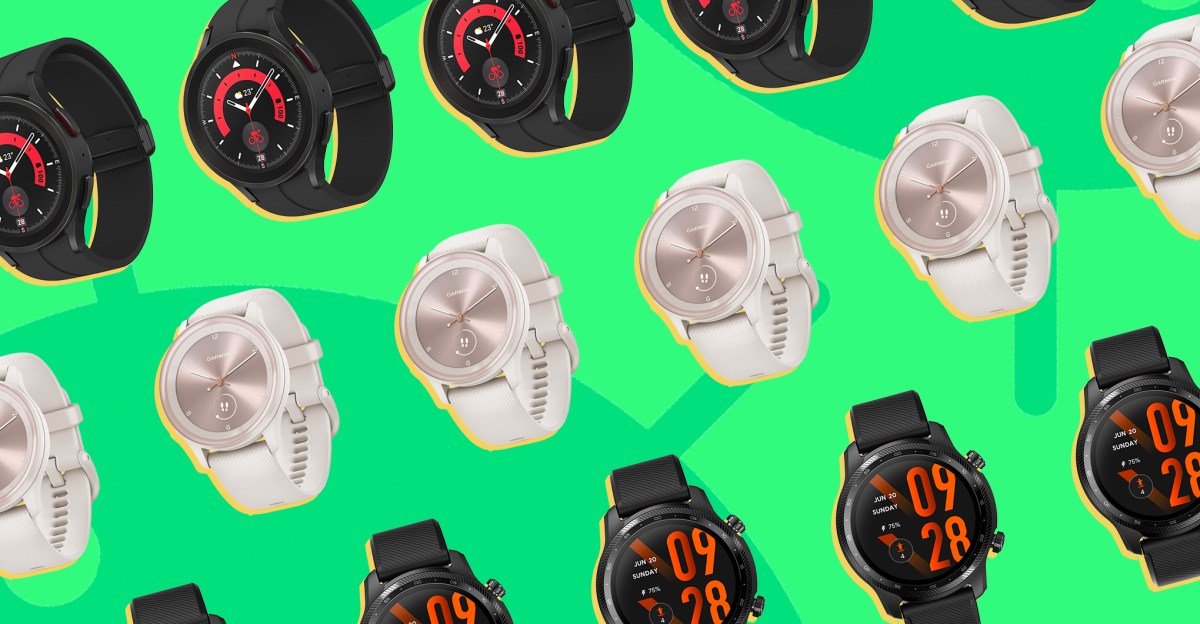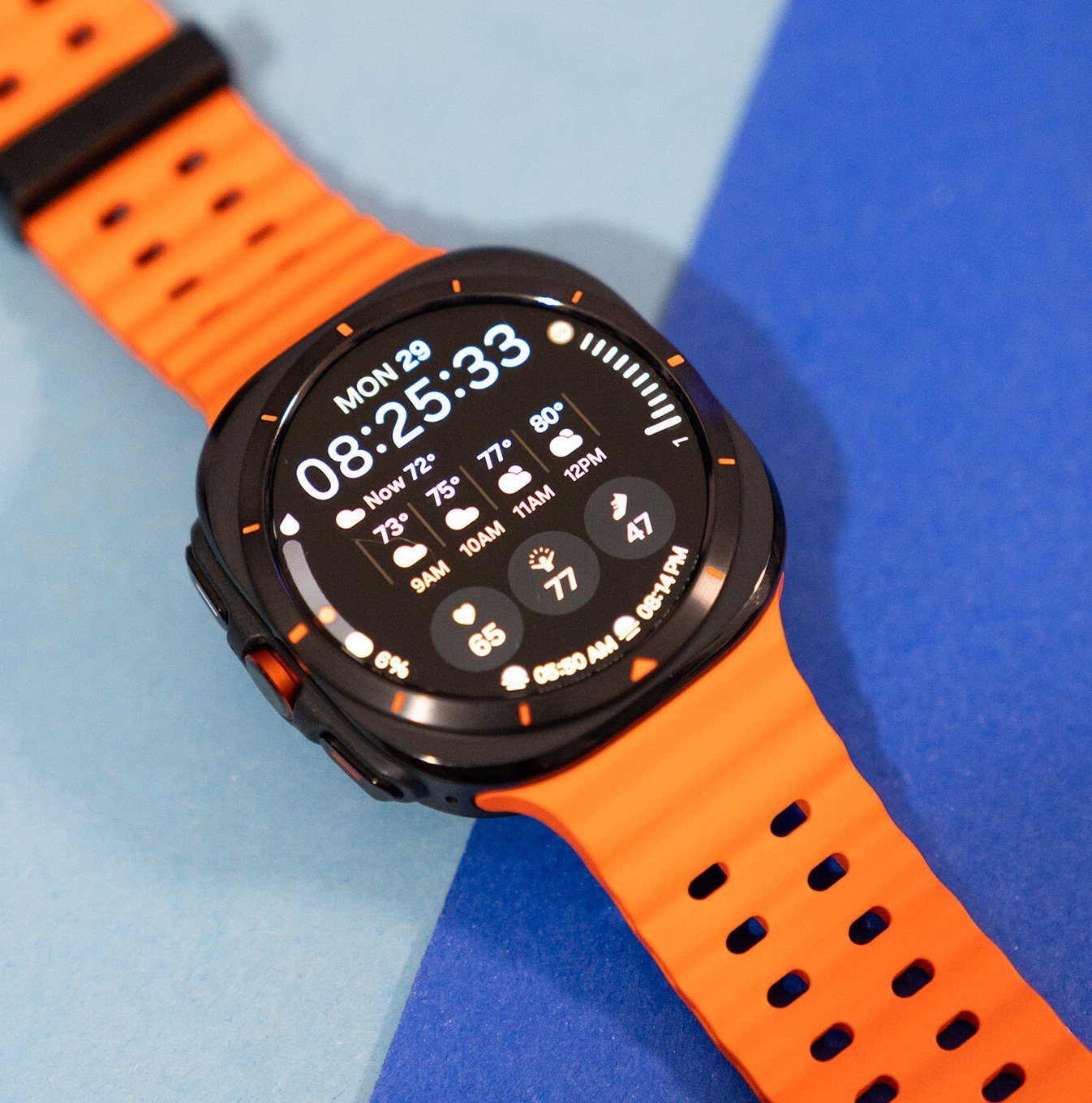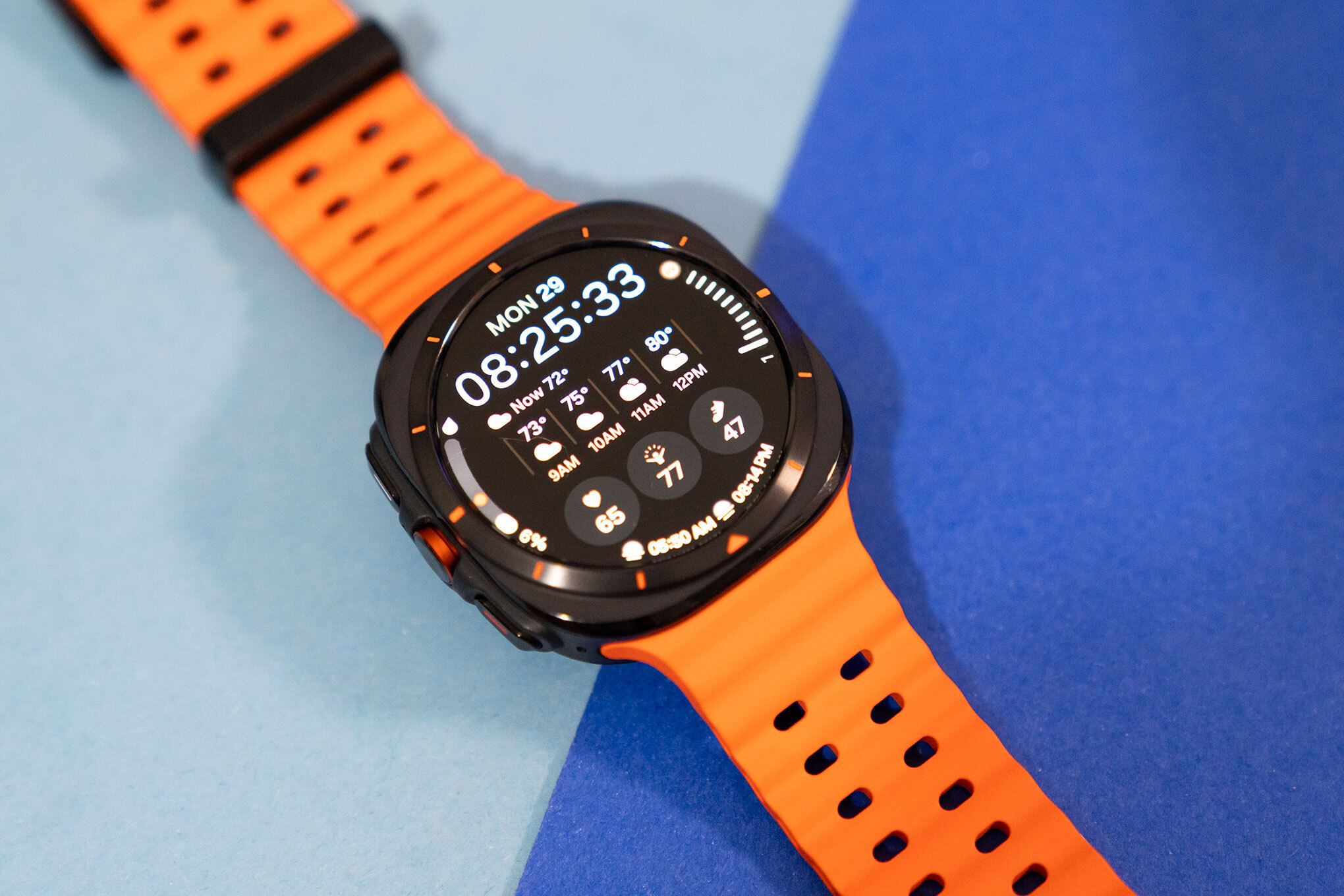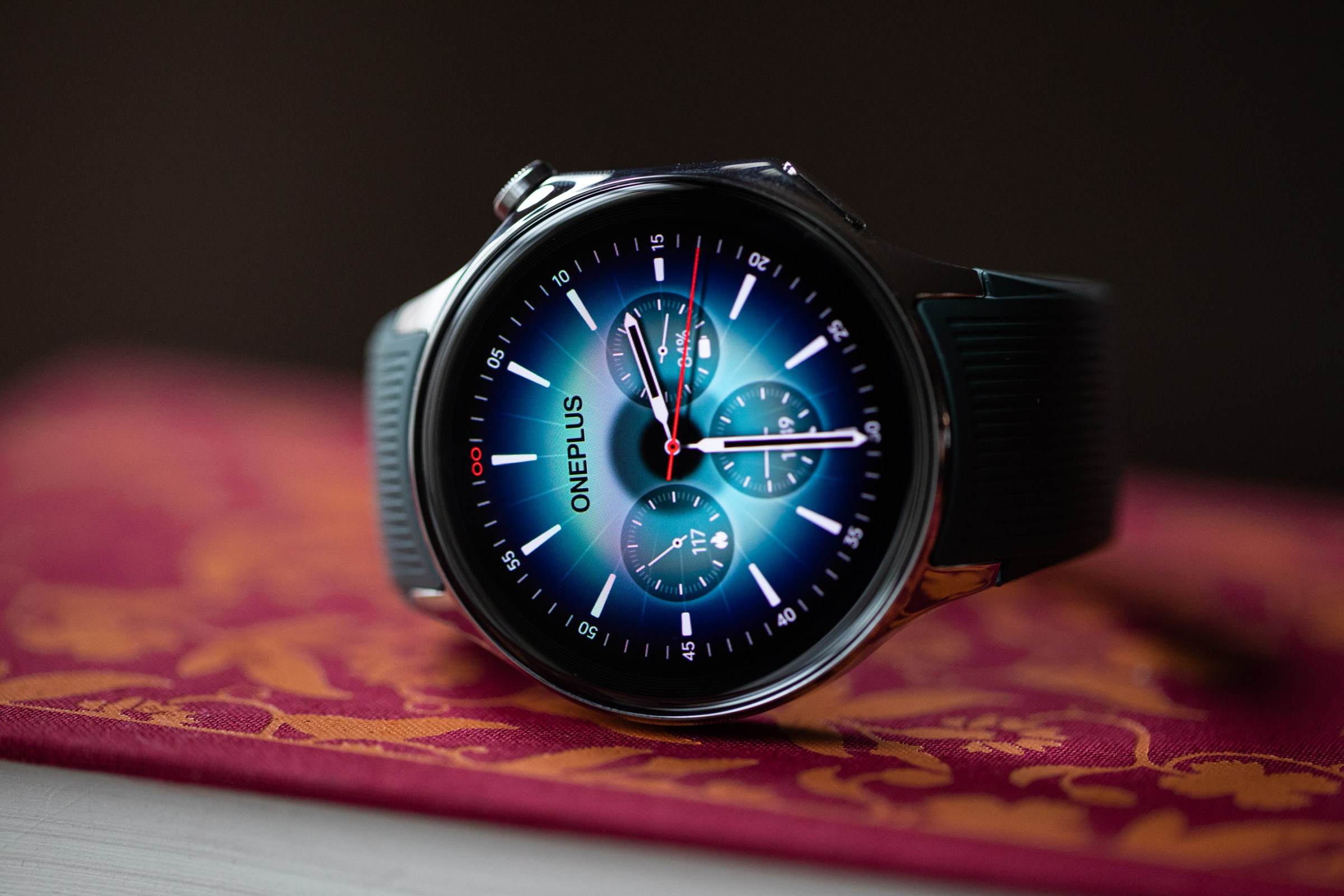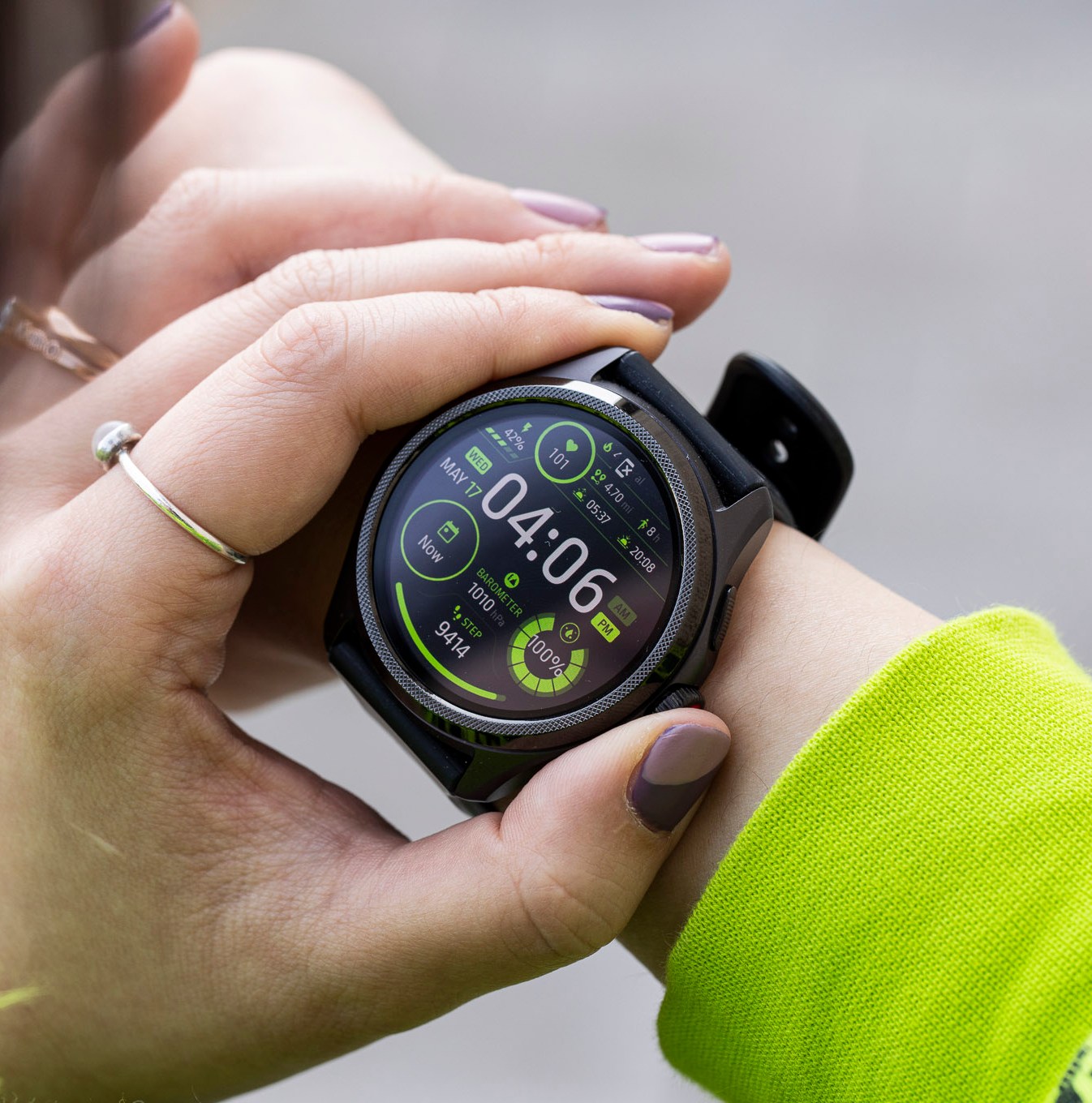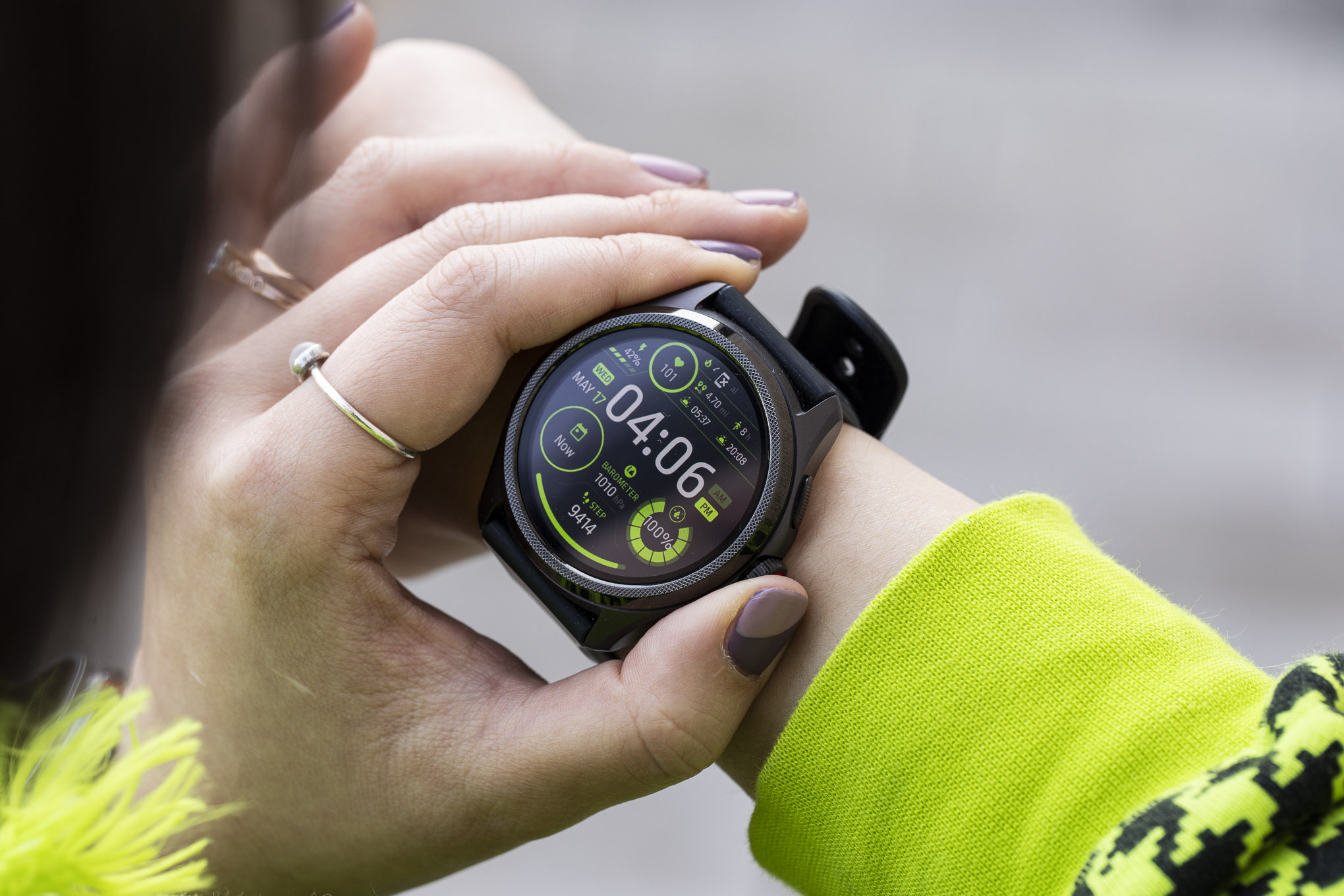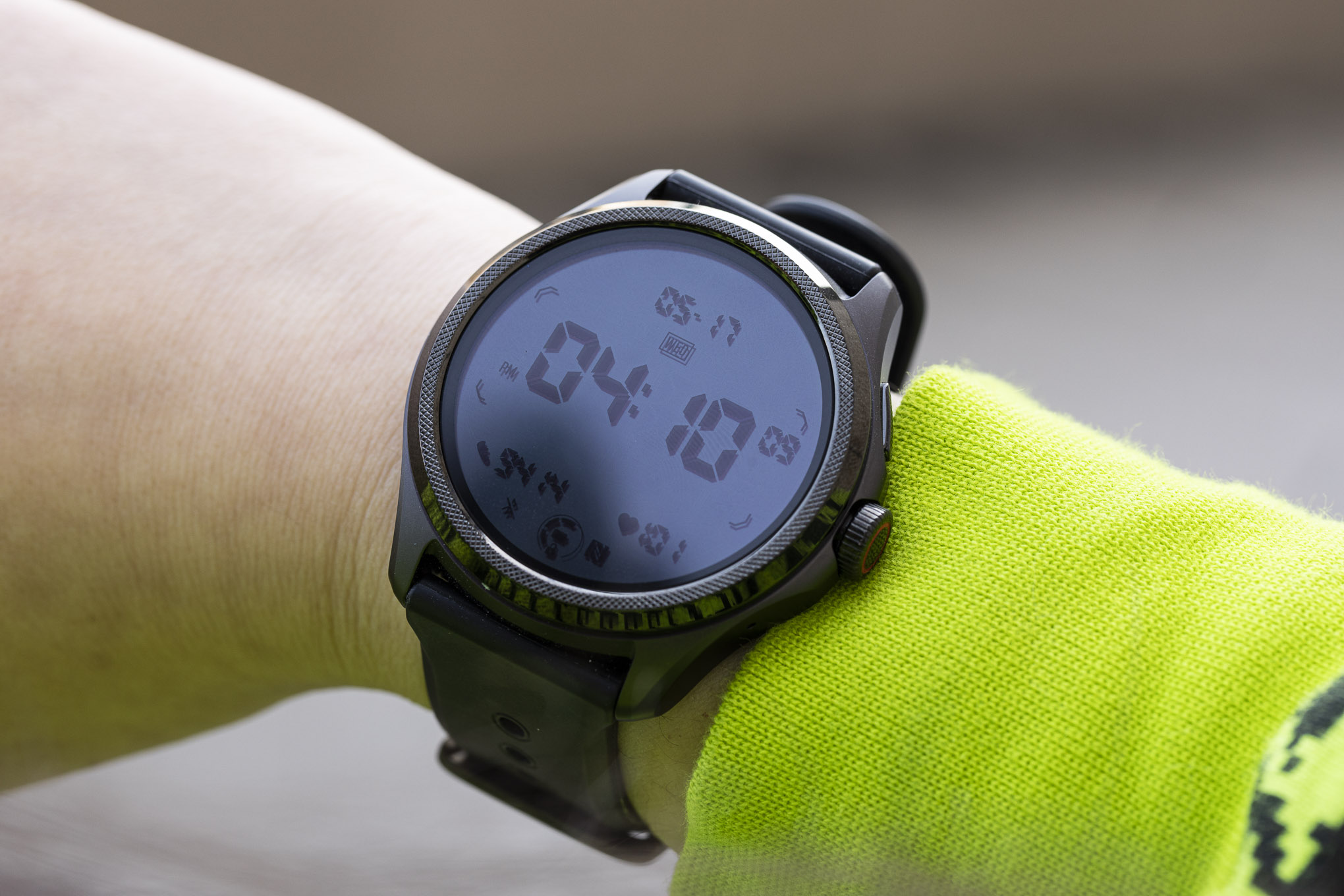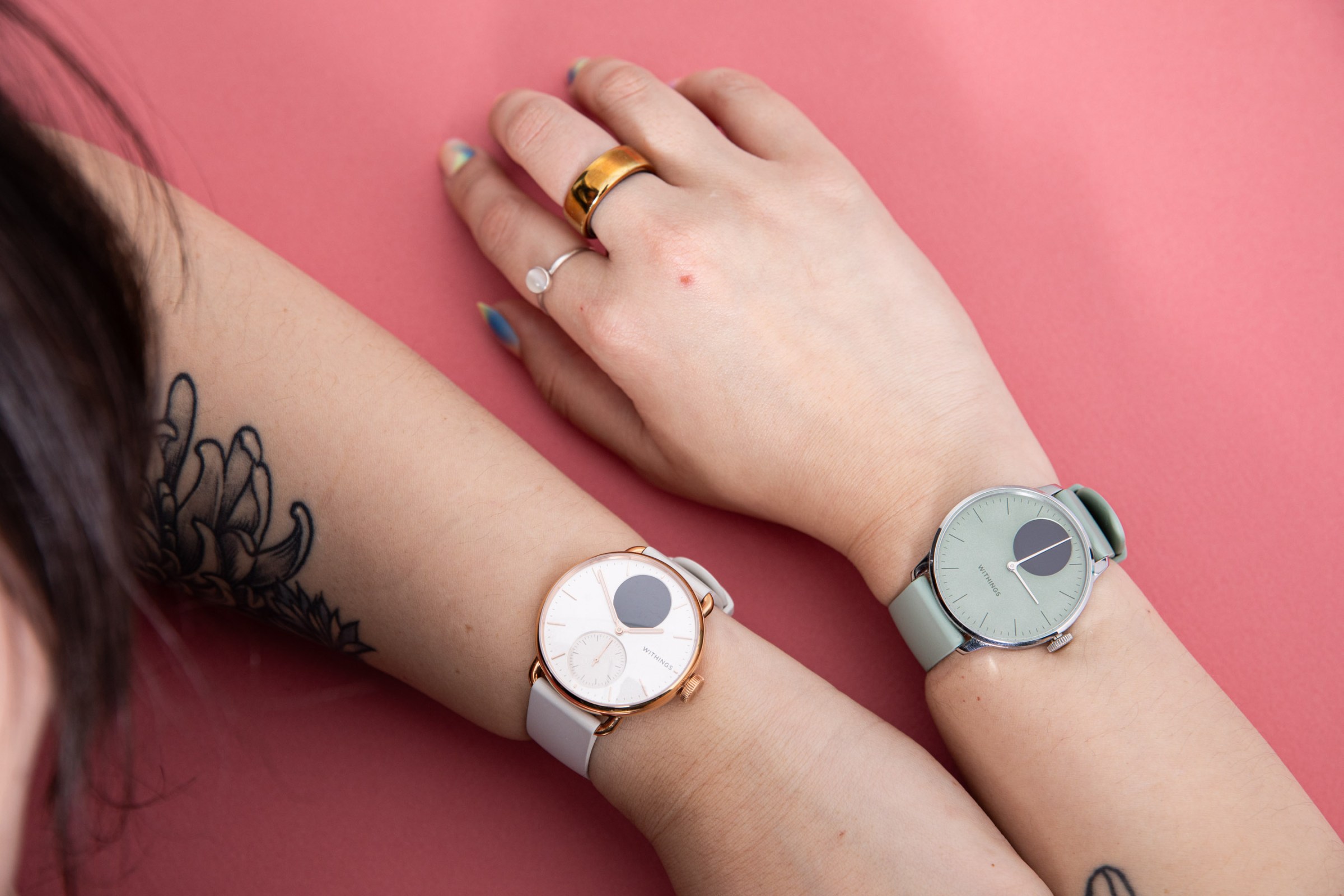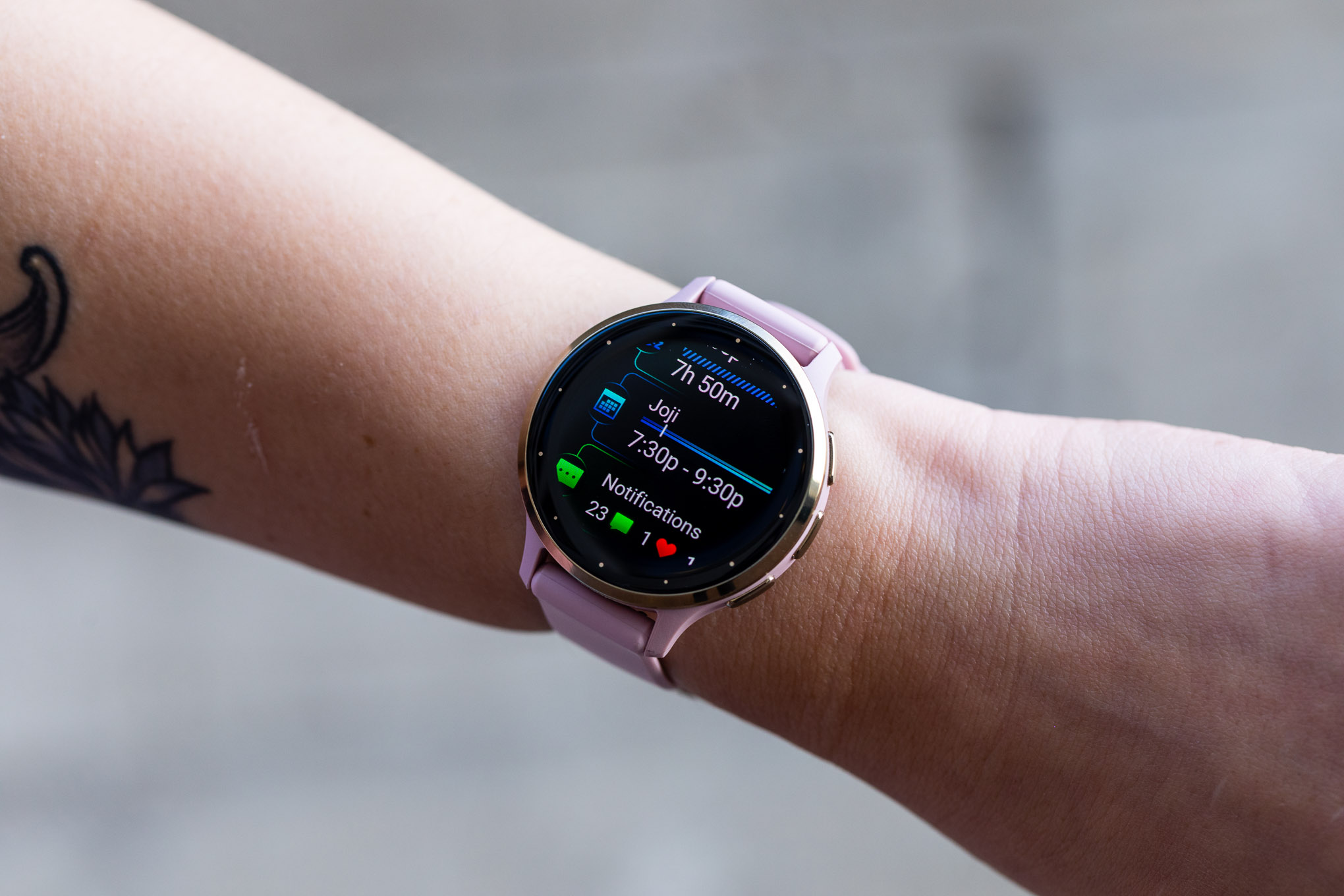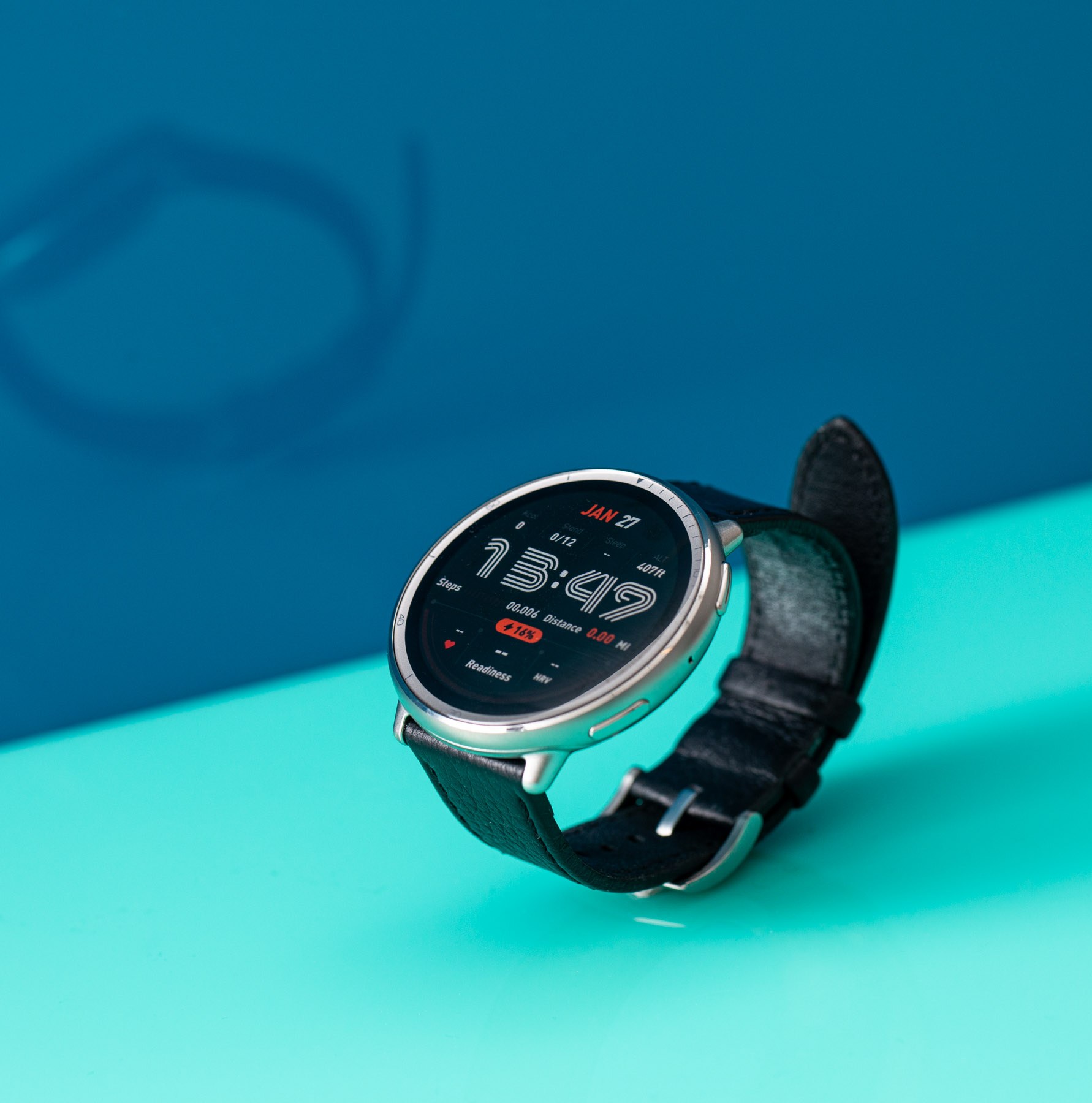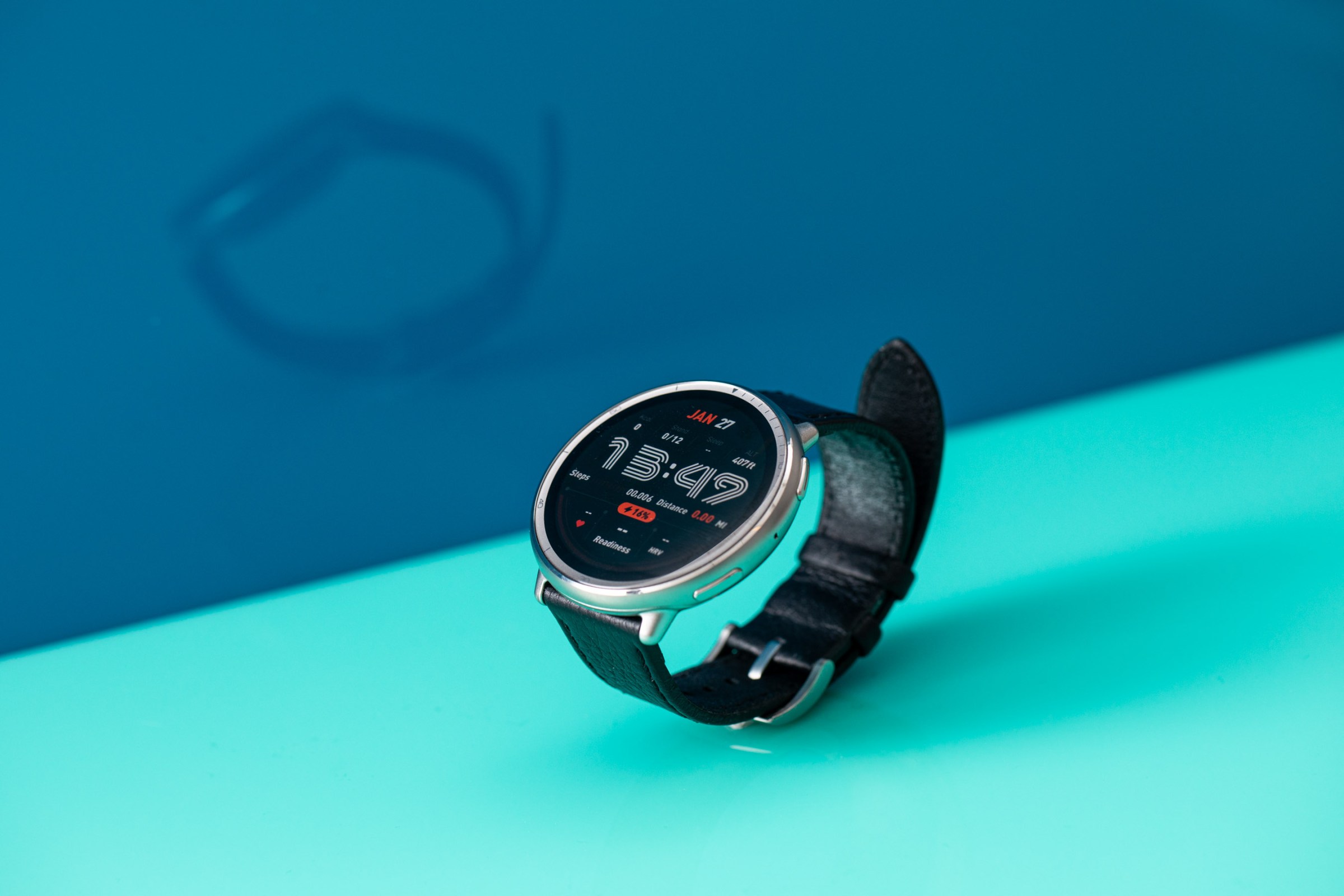After a long stretch of slim pickings, the last couple of years have been huge for Android smartwatches. Now there are more good options than ever — with more on the way soon.
Much like Android phones, this market is fragmented. Wear OS 5 is here for older Samsung Galaxy Watches, Google’s Pixel Watch 3, and the OnePlus Watch 3. The Galaxy Watch 8, which was released on July 25th, shipped with One UI 8 Watch (Samsung’s version of Wear OS 6). Wear OS 6 will come to even more smartwatches when it’s released later this year, although some may get left behind.
$270
The Pixel Watch 3 adds a host of new fitness features, brighter screens, and nifty Google integrations.
$299
Samsung’s latest smartwatch features a new squircle design, Gemini, and some new health features like an Antioxidant Index and Running Coach.
Read MoreWhat we’re looking forHow we test smartwatches
Collapse
Smartwatches are meant to help you keep track of your notifications, as well as your health and activity. We do a mix of benchmark testing and experiential, real-life testing. That means snoozing with them, taking them out on GPS activities like runs and hikes, working up a sweat in several workouts, and comparing how they do against long-term control devices for heart rate, sleep, and GPS accuracy. It also means evaluating how easy they are to pair, how annoying are notifications, and in the case of Android watches, checking to see if features are universally available across different phone makers (i.e., do all the Galaxy Watch features work if you have a Pixel phone?) Some factors we consider in our rankings are durability, performance, accuracy versus consistency in metrics, and of course, battery life.
Processor
Collapse
Android smartwatches have long been foiled by outdated processors. Is the chip under the hood powerful enough to run Wear OS or the platform’s own proprietary operating system smoothly?
Ecosystem
Collapse
Does a watch work better within one company’s product ecosystem versus another? Will you have to buy a new watch if you switch phones?
Smart features
Collapse
These days, most wearables are capable fitness trackers. However, they’re not all capable of controlling your smart home, contactless payments, or interacting with digital assistants.
Support
Collapse
Is this device likely to last you a while, or will you need to upgrade sooner than you’d like? How communicative is the OEM about forthcoming changes?
Battery life
Collapse
Can you get through the day without reaching for a charger? If not, does it support quick charging?
If you’d rather wait until Wear OS settles down a bit, there are platform-agnostic smartwatches and fitness watches you can buy in the meantime. Otherwise, you’ll want to be aware of the Wear OS version powering your watch. Mobvoi, for instance, has generally been a step behind Google and Samsung in rolling out the latest version of Wear OS. You should also take note of whether the watch you want is using the latest processor, or a last-gen model.
So long as you keep the aforementioned caveats in mind, Android users have more smartwatch options than ever before. I’ve rounded up my top picks, but if none of these is the right fit, you can always check out our fitness tracker buying guide.
Best smartwatch for Samsung phones
$299
Samsung’s latest smartwatch features a new squircle design, Gemini, and some new health features like an Antioxidant Index and Running Coach.
Read More
Sizes: 40mm, 44mm / Weight: 30g, 34g / Battery life: Up to 30 hours with AOD / Display type: Always-on OLED / GPS: Built-in GPS / Connectivity: LTE (optional), Bluetooth, Wi-Fi / Water resistance: Up to 50 meters, IP68 / Music storage: 32GB
If you have a Samsung phone, you’ll get the most mileage out of a Samsung smartwatch. And of the four watches Samsung has in its current lineup, I recommend the Galaxy Watch 8, especially if you’re upgrading from a Galaxy Watch 5 or earlier. Its new squircle shape may seem like an unnecessary change, but it allowed Samsung to slim down the watch’s frame and it felt more comfortable on my wrist. I was apprehensive at first, but quickly got used to it.
Internally, the Galaxy Watch 8 isn’t a huge departure from its predecessor. It has the same processor and 3-in-1 Biometric Sensor as the Galaxy Watch 7 and Galaxy Watch Ultra. Its battery is marginally larger, but the watch still lasted the same amount of time during our testing (a little over a day). Similarly, its screen has a maximum brightness of 3,000 nits as opposed to 2,000, but I couldn’t tell the difference even in direct sunlight.
A new wellness feature within the Galaxy Watch 8 called the Antioxidant Index uses blue, yellow, and infrared LEDs within a sensor to measure the carotenoid levels of your skin. Carotenoids are a type of antioxidant that impacts the color of fruit. To take a reading, you press your thumb up against the sensor for about 10 seconds. However, in my tests the sensor could be fooled by pressing any colorful object against it, including a piece of broccoli, finger colored by a marker, and a Cheeze-It.
Another new feature called Vascular Load measures how stressed your vascular system is by taking measurements while you sleep and exercise. It works, but Samsung is vague about what to do with this information. I did like the Galaxy Watch 8’s Running Coach feature, which creates a workout program based on how well you perform during a 12 minute test run. It gave me a fair assessment, and I found the workouts it suggested to be well-structured.
The Galaxy Watch 8 ships with One UI 8 Watch, Samsung’s fork of Wear OS 6. One of the operating system update’s most significant new features is making Google Gemini accessible on your wrist. In my tests, which included asking the watch to create a 30-minute Kpop playlist and sending a message on Slack were a mixed bag. For what it’s worth, Android Central reports that that Samsung’s leaked Wear OS 6 plans include late 2025 updates for the Galaxy Watch 6 Classic, as well as the Galaxy Watch 7, Galaxy Watch Ultra, and Galaxy Watch FE.
Read my full Galaxy Watch 8 review.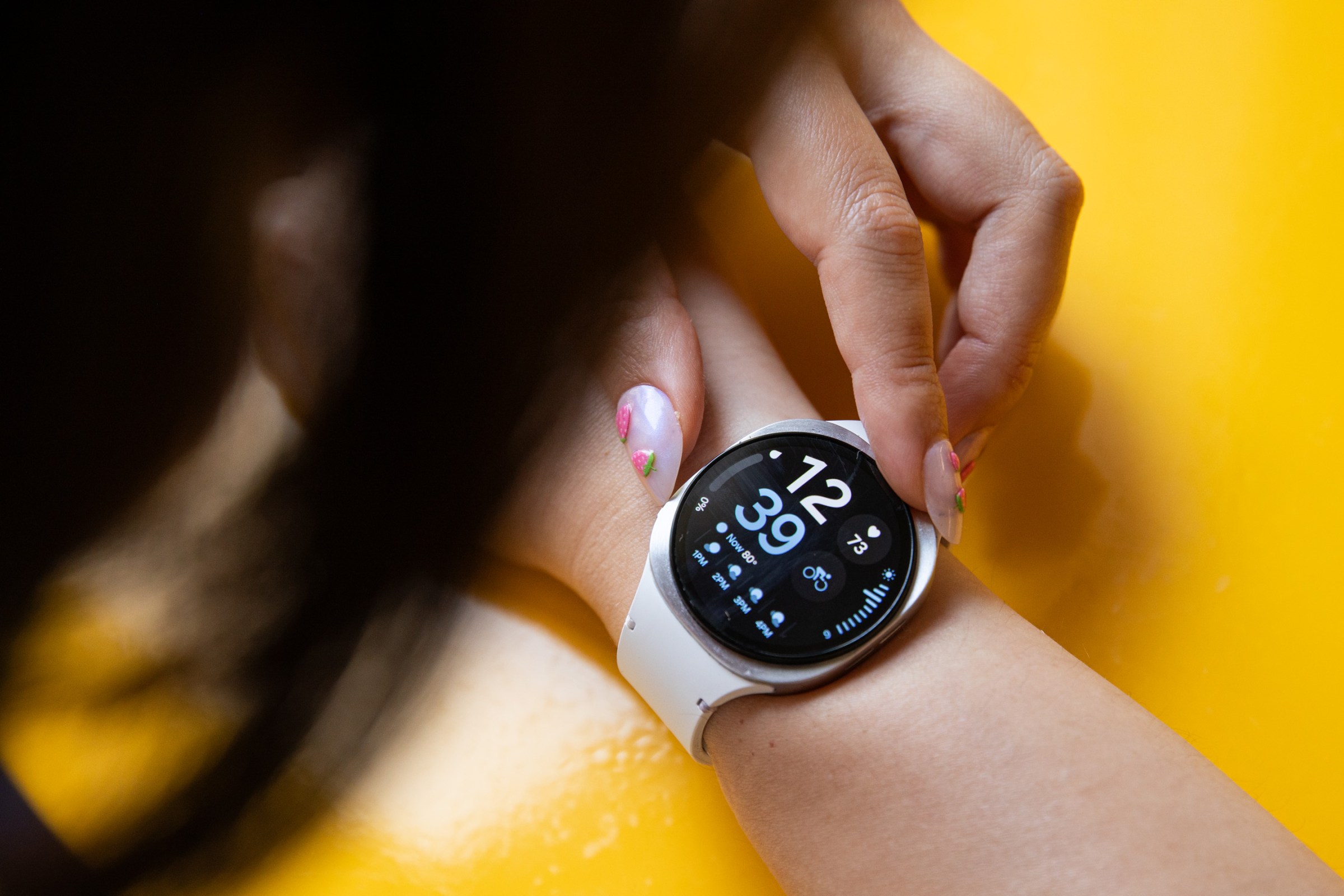
Photo by Amelia Holowaty Krales / The Verge
For more outdoorsy folks, the $649.99 Galaxy Watch Ultra might be the more sensible choice. Of all Samsung’s watches, it has the best battery life, lasting around three days in our testing. (Though, we never got the full 100-hour estimated battery life.) It’s got dual-frequency GPS, a new multisport activity, an emergency siren, increased durability, 10ATM of water resistance, and a Quick Button, which acts as a customizable shortcut button. It’s basically an Apple Watch Ultra for Android.
$650
The GoodLonger battery life than the regular Galaxy WatchDouble pinch is usefulAdds dual-frequency GPS and sleep apnea detectionCheaper than the Apple Watch UltraThe BadWhere is Samsung in this? The squircle chonk doesn’t fit small wristsSleep apnea feature is limited to Galaxy phonesAGEs metric is baffling
The Samsung Health app also delivers a good overall fitness tracking experience, especially since you can enable turn-by-turn navigation for hiking and cycling activities. We weren’t too impressed with nightly SpO2 readings, but Samsung’s overall sleep tracking continues to improve. You also get built-in GPS, body composition analysis, irregular heart rate notifications, fall detection, emergency SOS features, and EKGs. Most recently, Samsung added a new Energy score, AI-powered wellness insights, FDA-cleared sleep apnea detection, and a confusing AGEs Index metric for metabolic health. While the Energy score is broadly accurate, I found the AI-generated features to be hit or miss and the AGEs Index to be more gimmicky than useful. The latter feature is also limited to the Galaxy Watch 7, Galaxy Watch 8, and Ultra.
We don’t necessarily recommend the Galaxy Watches if you don’t have a Samsung phone. EKGs and sleep apnea detection require the Samsung Health Monitor app, which is limited to Samsung phones. You can work around it, but all Samsung watches work best with other Samsung devices.
Best Android smartwatch for non-Samsung users
$270
The GoodWe finally get a bigger size!Moderate battery improvementsLots of neat Google integrationsGood running updatesReadiness and Cardio Load scores not locked behind paywallThe BadIt’s best with a Pixel phone
Sizes: 41mm, 45mm / Weight: 31g for 41mm, 37g for 45mm / Battery life: Roughly 24 hours with AOD enabled / Display type: Always-on OLED / GPS: Built-in GPS / Connectivity: LTE (optional), Bluetooth, Wi-Fi, Safety Signal with Fitbit Premium / Water resistance: 5ATM / Music storage: 32GB
The $349.99 Google Pixel Watch 3 is done playing catch-up. It’s an annoying truth that if you have a Samsung phone, a Samsung smartwatch is probably the best choice for you. However, for everyone else, I highly recommend the Pixel Watch 3.
There are several updates to the Pixel Watch 3, but the gist is that it’s a more refined watch that also expands into new territory. One major update is that there are now two sizes: 41mm and 45mm. You get extra screen real estate on the larger watch, but the bezels are also smaller on the 41mm model. (If you’re trying to pick between sizes, I prefer the 45mm.) The displays are brighter as well, ranging from a minimum of 1 nit to a maximum of 2,000 nits.
The 45mm model also wears small. The difference between the two sizes isn’t massive as far as wearability. Photo by Amelia Holowaty Krales / The Verge
Health and fitness also get several updates, especially for runners. There’s a new Cardio Load metric that gauges the cardiovascular intensity of the exercises you’ve been doing over a set period of time. It’s similar to Garmin’s Training Load metric. You’re also given a Cardio Load target based on your fitness goals, readiness, and current activity. Runners also get a new dashboard full of form analysis metrics as well as the ability to program custom workouts. In addition, you can get AI-generated suggested workouts. And if you’re in Europe or the US, the Pixel Watch 3 can detect if you no longer have a pulse and call emergency services.
The Pixel Watch 3 also adds a bunch of nifty Google integrations. It’s excellent if you have a Google-powered smart home because you can now directly view and interact with your Nest Doorbell or camera feeds. You can also use the watch as a remote for your Google TV, and there are new Google Home Tile / complications that make controlling your home from your wrist a breeze. Also new are offline Google Maps, the ability to unlock Pixel phones, and a Call Assist feature that lets a caller know you need an extra minute to pick up your phone.
A software update in June brought precise Bluetooth tracking to the device, so you can find it with “centimeter-level accuracy” with a device that supports Bluetooth 6.0. Google has committed to providing the Pixel Watch 3 with at least three years of software updates, the next of which includes Wear OS 6 later this year. One of the main features of that software update is bringing Google’s Gemini to smartwatches. My colleague Allison Johnson tried Gemini on the Google Pixel Watch 3 and had a so-so experience. It worked best when she asked low stakes questions, like asking where to get coffee, or whether you need to scrub a sweet potato before peeling it. It could add items to a calendar, but wasn’t able to find upcoming events. Gemini works best when you take the time to experiment, but that may get frustrating.
That said, while the Pixel Watch was initially framed as a watch for any Android phone, several updates this time around mean you’ll get the best experience with a Pixel phone. But compared to Samsung, there isn’t quite as much lock-in. Health features, for example, are available to everyone so long as you have a Fitbit account. Extra good news: Google removed certain metrics, like the Daily Readiness Score, from the Fitbit Premium paywall. Mostly, the features locked to Pixel phones are the Recorder app and things like the ability to unlock your phone with the watch.
One thing to be mindful of is durability. While the domed display is beautiful, we cracked the screen on the original Pixel Watch and got deep scratches on the Pixel Watch 2. (Thankfully, we haven’t messed up the Pixel Watch 3.) Google doesn’t offer any repair options, but you can get the Preferred Care extended warranty if you want to be prepared should something happen. It’s not ideal since it’s limited to the US and Canada, but it’s a step in the right direction.
In case you’re wondering if a Pixel Watch 4 will come out, it’s likely to be announced at Google’s Pixel 10 launch event, which is happening on August 20th. A leak from earlier this year suggests the Pixel Watch 4 will have a bigger batter, faster charging, and additional buttons. Another rumor reported by Android Headlines says the unannounced models won’t see a price increase.
Read my full Google Pixel Watch 3 review.
Best alternative to Google and Samsung smartwatches
$245
The GoodPraise be, the watch worksLong battery lifeLaunches with Google AssistantCompetitively pricedThe BadNo LTE optionAndroid onlyMissing EKGs, fall detectionOnly one size
Sizes: 47mm with 22mm straps / Weight: 49g case, 80g with strap / Battery life: Up to 100 hours in smart mode, 48 with AOD on, and 12 days in power-saving mode / Display type: OLED touchscreen / GPS: Dual-frequency GPS, Beidou, GPS, Galileo, GLONASS, QZSS / Connectivity: Bluetooth, Wi-Fi / Water resistance: 5ATM / Music storage: 32GB
The $299.99 OnePlus Watch 2 is what a glow-up looks like. While the original OnePlus Watch was horrible, this watch helps fill the void that Fossil left when it said it was pulling out of Android smartwatches — namely, a viable alternative to Google and Samsung.
The 47mm case is big for petite wrists, and unfortunately, it only comes in one size, but it’s made of durable stainless steel and sapphire crystal. Plus, it houses a 500mAh battery. That, plus a dual-chip architecture and novel dual OS system, results in super long battery life. How long a smartwatch lasts will, of course, depend on your individual usage, but I got nearly four days with normal use. That’s incredible for a flagship.
The OnePlus Watch 2 has stupendous battery life. Photo by Amelia Holowaty Krales / The Verge
It also has Wear OS 4, making it the only third-party Wear OS watch running the latest software (Watch 2 users might receive Wear OS 5 updates before September). It has Google Assistant from the get-go — a big achievement since that’s been a problem with other third-party Android watches. Plus, you get access to the Google Play Store for a robust app ecosystem. On the fitness side of things, OnePlus added dual-frequency GPS. That’s a plus if you’re outdoorsy and frequent challenging GPS environments like dense forests or crowded cities.
The main things you’re giving up are LTE connectivity and some features like EKGs, atrial fibrillation detection, native period tracking, and fall detection. The lack of cellular is a bummer, as it means you really should keep your phone on you when you’re out and about. Still, the $300 price tag is a competitive one and may be worth the trade-off given battery life.
That said, the OnePlus Watch 3 ($299.99) is now available from OnePlus and at Amazon. It features a rotating crown that actually scrolls, improved battery life, a better GPS antenna, and a bunch of new health features. If you want to learn more, here’s my hands-on.
Read my full OnePlus Watch 2 review.
Best fitness smartwatch for Android
$140
The GoodTruly multiday battery lifeW5 Plus chip helps to futureproofGood health tracking updatesThe ULP display has an ingenious way of displaying heart rate zonesDigital crown!The BadWhy so many apps??W5 Plus doesn’t get you a huge performance bumpNo digital assistant
Sizes: 50mm with 24mm straps / Weight: 44.3g / Battery life: Up to 80 hours / Display type: OLED touchscreen and secondary ultra-low power display / GPS: GPS, GLONASS, GALILEO, Beidou / Connectivity: Bluetooth, Wi-Fi / Water resistance: 5ATM / Music storage: 32GB
Mobvoi’s TicWatch lineup has its devoted fans for a reason: super long battery life. The $349.99 TicWatch Pro 5 is no exception. It’s got an estimated 80 hours of battery life with standard use, a secondary ultra-low power display, and a massive (for a smartwatch you wear on your wrist, at least) 628mAh battery. I didn’t quite get 80 hours in my testing, but I did get a solid 48-60 hours with heavy GPS use. That outclasses most of the watches in this category (except the OnePlus Watch 2) and is useful for backpackers and endurance athletes. It might not hold a candle to a top-of-the-line Garmin, but it’s also a smarter watch for a fraction of the price.
Battery life aside, the Pro 5 is a good option for fitness-focused people who aren’t keen on giving up smart capabilities for a Garmin or Polar. It’s also more durable. This time around, Mobvoi has also added a digital crown so you don’t have to worry about scrolling through menus with sweaty fingers. The flatter side button also reduces the risk of accidental presses.
The ULP display helps to extend battery life. Photo by Amelias Holowaty Krales / The Verge
The Pro 5 also has an ingenious method of displaying heart rate. When you lift up your arm, the backlight changes color depending on which heart rate zone you’re in. That means you can instantly gauge whether to up the intensity or slow your roll. The Pro 5 also adds new training metrics, like VO2 Max and recovery time.
The TicWatch supports stress tracking, all-day blood oxygen monitoring, fatigue assessments, as well as atrial fibrillation and irregular heartbeat detection. For outdoorsy types, it also has access to multiple GNSS systems, and there’s a new barometer and compass app, as well as a one-tap measurement app that gives you a quick look at five metrics (heart rate, blood oxygen, stress, respiratory rate, and overall heart health).
It’s also pretty capable on the productivity front. You get contactless payments, access to the Play Store, notifications, and the ability to take calls. It runs on W5 Plus chip, which is a more powerful version of the chip inside the Google Pixel 3 and OnePlus Watch 2. This is a plus in terms of hardware futureproofing. However, the watch received an update to Wear OS 4 over a year after its release, and has not commented on whether it will support Wear OS 5, much less Wear OS 6. Two other major concerns are the 50mm case that may not suit smaller wrists and the lack of a digital assistant.
The Pro 5 has also seen a steady price drop since the start of the year, and it’s regularly available for under $150.
Read my full Mobvoi TicWatch Pro 5 review.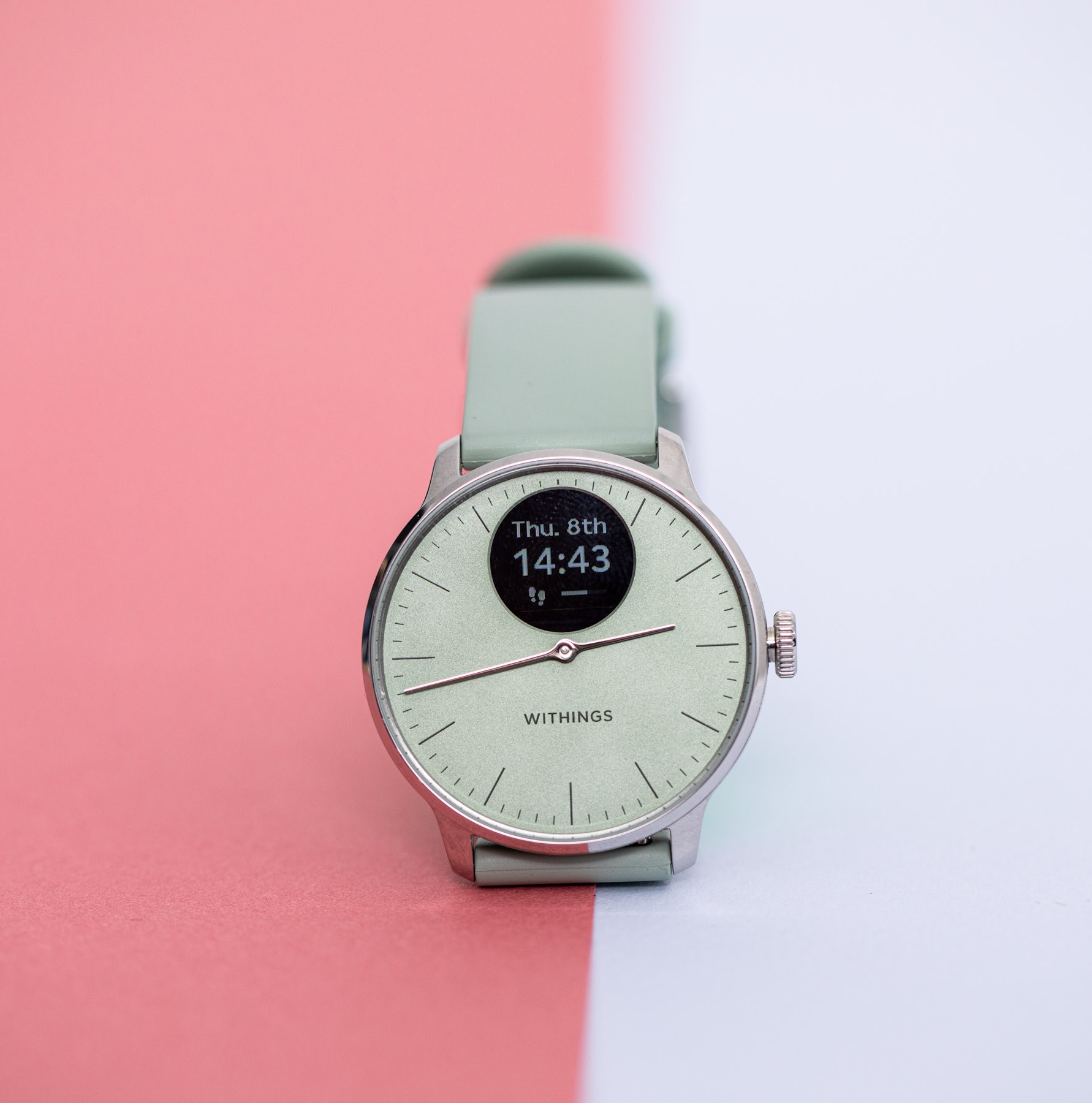
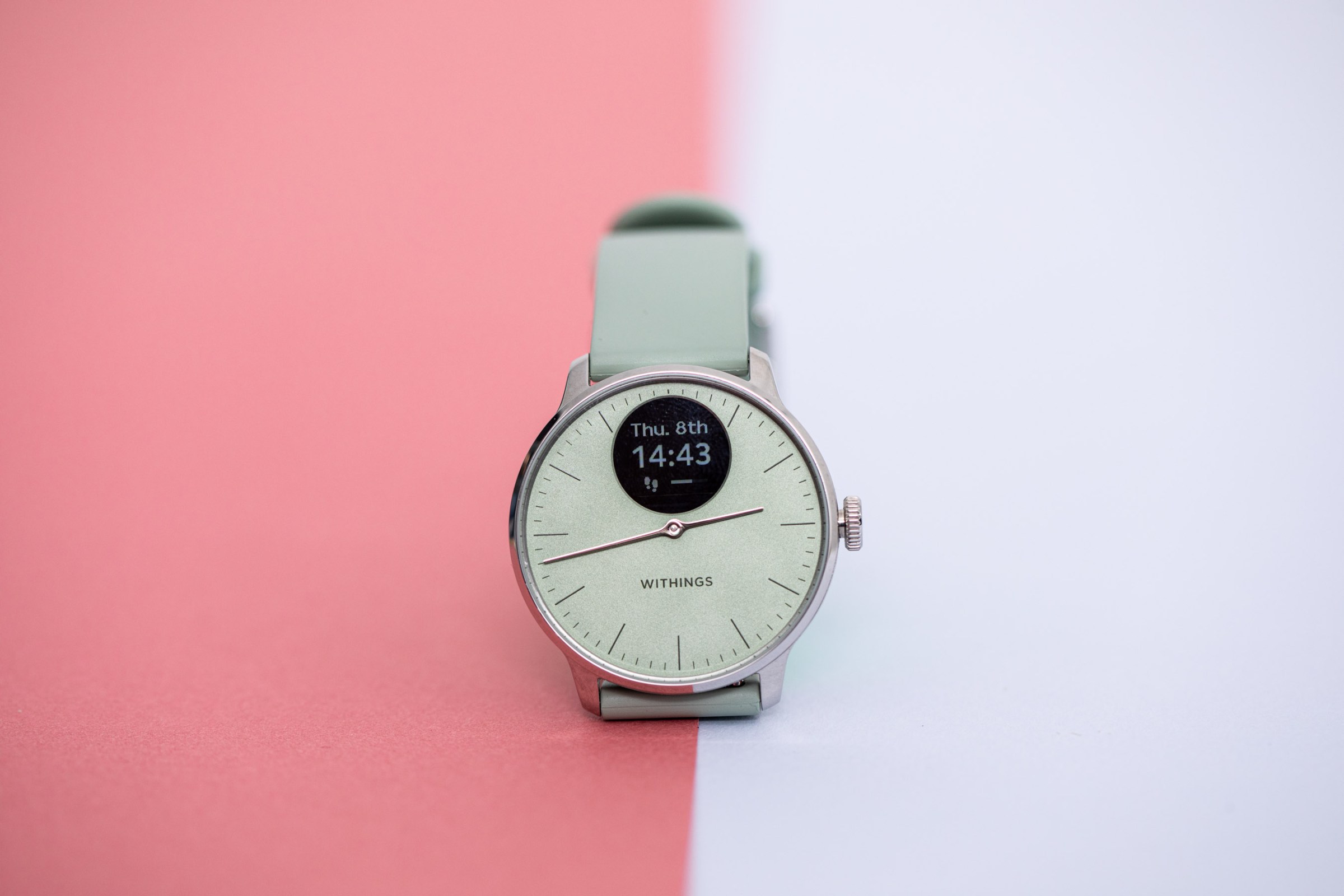
$250
The GoodLong battery lifeAlso gets you lots of complimentsComfortable to wearGreat priceAdds period trackingThe BadHas fewer sensors than the ScanWatch 2Again, the OLED display is tiny
Sizes: 37mm with 18mm straps / Weight: 45g / Battery life: Up to 39 days / Display type: OLED display / GPS: Tethered GPS / Connectivity: Bluetooth / Water resistance: 5ATM / Music storage: N/A
Hybrid smartwatches are an excellent way to keep things simple and subtle. The $249.95 Withings ScanWatch Light gets you the basics like push notifications, timers, and alarms. On the health front, you can track steps, sleep, menstrual cycles, and GPS workouts. (That said, GPS is tethered from your phone, not built in.) The design reminds me of a classier Swatch, particularly if you get the more colorful options in a minty green or pale blue. But the big reason the Light has dethroned our previous pick, the Garmin Vivomove Sport, is its extra-long battery life. Withings estimates it lasts up to 30 days on a single charge, and I got pretty close to that in testing with 25 days. Despite the Vivomove’s more appealing $180 price tag, it only lasts about five days.
The ScanWatch 2 (left) is a fancier version of the Light and has a few more health features. Photo by Amelia Holowaty Krales / The Verge
If you want a bit more out of a hybrid, you can also opt for the ScanWatch 2. It’s an extra $100, but you get EKGs and atrial fibrillation detection, temperature sensors, SpO2 readings, and an altimeter for measuring elevation. It also looks a bit more elegant on the wrist, partly because of a secondary dial that tracks your daily step progress.
If neither matches your style, the Vivomove Sport is still a good option that gets you access to Garmin’s in-depth platform. Its Vivomove Trend is a slightly more upscale option that also supports Qi charging.
Read my full Withings ScanWatch Light review.
Best platform-agnostic fitness smartwatch
$343
The GoodGood battery lifeBetter sleep tracking and nap detectionEKG and AFib featuresCan take calls and use your phone’s voice assistantAudio meditation sessions done wellThe BadPricey compared to other lifestyle smartwatchesLimited third-party app ecosystemNo LTE capability
Sizes: 41mm with 18mm straps; 45mm with 22mm straps / Weight: 40g for the 3S; 47g for the 3 / Battery life: Up to 10 days for 3S; 14 days for 3 / Display type: OLED touchscreen / GPS: GPS, GLONASS, GALILEO / Connectivity: Bluetooth, Ant Plus, Wi-Fi / Water resistance: 5ATM / Music storage: 8GB
Garmin is best known for making rugged GPS watches that have excellent fitness features but aren’t so smart otherwise. But the $449.99 Venu 3 caters to people who want top-notch fitness tracking without sacrificing productivity features.
It’s got a colorful and vibrant always-on OLED display and comes in two sizes: 41mm and 45mm. Like its predecessor, the Venu 2 Plus, it also has a microphone and speaker so you can take and make calls directly from the wrist. It also has a clever workaround for digital assistants — it uses Bluetooth to work with whatever assistant is already on your phone. You’d think more fitness trackers would do this, but they don’t. It worked well in testing, though digital assistants aren’t always the smartest at understanding commands.
The Venu 3 series is a little pricey, but it’s the smartest watch Garmin’s got to offer. Photo by Amelia Holowaty Krales / The Verge
The Venu 3 doesn’t have the best third-party app ecosystem, but it has Spotify, Deezer, and Amazon Music for offline playback. Android users can also send quick responses for texts, and the watch works with either iOS or Android for folks who want to keep their options open. It also has fall detection, live tracking, and contactless payments.
As for health features, it has Garmin’s latest heart rate sensor, which enables its FDA-cleared EKG app to detect atrial fibrillation. Otherwise, you get built-in GPS, continuous heart rate monitoring, all of the advanced coaching features in the Garmin Connect app, and Garmin’s famous in-depth health data. The Venu 3 also improves sleep tracking with nap detection and adds audio-guided meditation sessions. There’s also a new wheelchair mode.
This isn’t the most hardcore Garmin that money can buy, but it’s definitely one of the smartest. The price is a bit high compared to most smartwatches, but by Garmin standards, it’s middle-of-the-pack. If you need a bigger screen, Garmin just released the Venu X1, a GPS smartwatch with a 51mm display. Garmin says it can last up to eight days per charge, and Pulse Ox sensor, but cannot take an EKG. The Venu X1 is available for $799.99 at Amazon and Best Buy.
Read my full Garmin Venu 3S review.
Best budget Android smartwatch
$100
The GoodStacked feature set for the priceLooks spiffyGood battery lifeThe BadTouchscreen and voice commands are finickyCan’t edit workoutsAI chatbots are meh
Size: 43mm w/ 20mm straps / Weight: 29.5g for standard, 31.7g for premium / Battery life: Up to 10 days / Display type: OLED touchscreen / GPS: Five GNSS systems / Connectivity: Bluetooth, Wi-Fi / Water resistance: 5ATM / Music storage: N/A
Amazfit’s made a name for itself making budget wearables that punch far above their weight. The $99.99 Amazfit Active 2 is no exception.
The Active 2 is a surprisingly spiffy watch considering its price. The standard version has a stainless steel case with tempered glass, and if you shell out $50 extra, you can get the premium model with sapphire crystal and an extra leather strap at Amazon and Amazfit. Normally, I don’t get compliments while wearing budget smartwatches, but I got several while wearing this one.
While it doesn’t run Wear OS, its proprietary Zepp OS makes for a platform-agnostic smartwatch. Feature-wise, you get all the basics and then some. That includes things like continuous heart rate monitoring, blood oxygen rate, heart rate variability, stress tracking, alerts for abnormally high and low heart rate, and skin temperature tracking. You also get offline maps with turn-by-turn navigation, 160 different sport activity profiles, and a new strength training activity that automatically tracks reps. The Active 2 doesn’t have dual-frequency GPS, but it has the next best thing: access to all five of the major GNSS satellite systems. As far as health tracking goes, it also emphasizes trendy metrics like a readiness score and has a revamped sleep tracking algorithm. Battery life is estimated at about 10 days, though as a heavy user, I got around eight to nine in my testing.
This watch got me several compliments, which I don’t usually expect at this price point. Photo by Amelia Holowaty Krales / The Verge
Something that sets the Active 2 apart at this price range is access to an AI assistant on wrist and AI chatbots within the Zepp app. The Zepp Flow assistant (on wrist) is a little finicky, but you can use it to control your watch’s on-device settings and basic queries like asking for the weather. The Zepp Aura AI bot costs an extra $77 yearly, and you can ask it to deliver insights into your readiness and sleep scores. I found it hit or miss, but at least it’s well-integrated into the app, snappy, and most importantly, optional. More useful is the Zepp Coach, which you can use to generate custom training plans.
All in all, I don’t have much to gripe about this watch, which is wild given how affordable it is. It certainly delivers an outsized bang for your buck. Just make sure you wipe off any sweaty fingers, since its touchscreen doesn’t handle them well.
Read my full Amazfit Active 2 review.
Update, August 6th: Adjusted pricing/availability and updated the post to include the Samsung Galaxy Watch 8 and reflect recent happenings in the space, particularly the addition of Google’s Gemini in Wear OS. Brandt Ranj also contributed to this post.
Follow topics and authors from this story to see more like this in your personalized homepage feed and to receive email updates.Victoria SongClose Victoria Song
Victoria Song
Senior Reviewer, Wearable Tech
Posts from this author will be added to your daily email digest and your homepage feed.
PlusFollow
AndroidCloseAndroid
Posts from this topic will be added to your daily email digest and your homepage feed.
PlusFollow
Buying GuidesGadgetsCloseGadgets
Posts from this topic will be added to your daily email digest and your homepage feed.
PlusFollow
GoogleCloseGoogle
Posts from this topic will be added to your daily email digest and your homepage feed.
PlusFollow
SmartwatchCloseSmartwatch
Posts from this topic will be added to your daily email digest and your homepage feed.
PlusFollow
TechCloseTech
Posts from this topic will be added to your daily email digest and your homepage feed.
PlusFollow
WearableCloseWearable
Posts from this topic will be added to your daily email digest and your homepage feed.
PlusFollow

